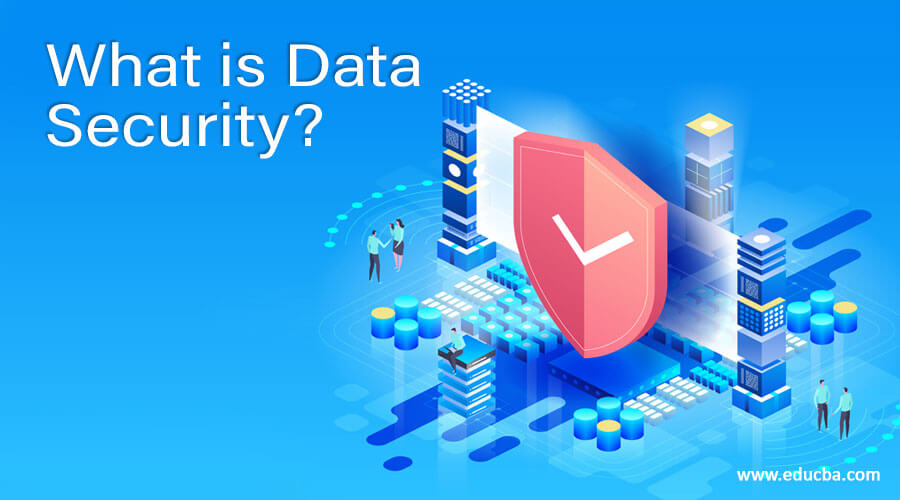
What is Data Security?
Data security is a collection of principles and technologies that safeguard data against deliberate or inadvertent damage, modification, or disclosure. The protection of data can be implemented by a variety of technologies and techniques, including administrative controls, physical safety, logical checks, organization, and other safeguarding techniques that limit access to unauthorized or malicious users or processes.
Why is Data Security Important?
The data generated, compiled, stored, and shared by your organization is a precious commodity. Protecting the business from corruption and unauthorized internal or external access would avoid financial loss, damage to credibility, deterioration in customer trust, and brand degradation. In addition, legislation from the government and industry on data protection makes it necessary for your organization to follow and enforce these laws with any sector in you do business.
Data Security Solutions:
With more than 80 patents and 51 years of experience, Micro Focus specializes in computer protection solutions. Micro Focus simplifies the security of confidential data even in the most difficult cases of usage by sophisticated data encryption, tokenization, and key management to secure data through applications, transactions, storage, and large data platforms.
- Data Encryption: Data-based and tokenization security solutions for data protection in the industry, cloud, mobile and large-scale environments.
- Enterprise Data Protection: This offers a data-centered end-to-end approach to data security for organizations.
- Payments Security: Solution offers complete point-to-point encoding and retail payment tokenization to minimize PCI scope
- Web Browser Security: Protect sensitive data gathered by the client, from when cardholders or personal details are entered by the user, and retained in the confidential host destination through the ecosystem.
- Email Security: This system offers end-to-end email and mobile message encryption, ensuring that personal information and health data are protected and secure.
- Cloud Access Security: Security platform that allows you to safely move into the cloud while securing your data
What are Data Security Considerations?
You need to have a few data protection issues on the radar:
Where are your important data?: With the fact that you do not know where your confidential data is kept, you can not know how to secure your fact.
Who Has Access to Your Data?
If users have unrestricted access or unusual permission ratings, organizations are vulnerable to abuse of information, theft or misuse. Some of the most significant data protection aspects are understanding who has access to the company data at all times.
Have you continuously tracked and warning your data in real-time: Continued monitoring and alerting are not only necessary to comply with enforcement requirements, but can also be used to detect irregular file activity, suspicious accounts, and computer actions before too late.
Types of Data Security Controls
Achieving a strategy of data protection should help you realize the value of data security. Many technologies and processes for data protection will help the efficiency of your business while protecting data. It control forms include:

1. Access Control
The method called access control offers authentication and permission. Systems of access control may include:
- Role-based access control allows users to access unique information based on their organizational position.
- Automatic access control, allowing a network administrator to manage access to all information strictly.
2. Encryption
Data encryption improves data security effectively through the use of an algorithm (called an encryption key) and the encryption key to convert regular text into encrypted ciphertexts. The ciphered data is unreadable for an unauthorized user.
Then, only users with an approved key can decrypt these details. Encryption is used to protect the data you hold and data between databases, mobile devices, and the cloud (so-called transit data). Your encryption keys must be handled carefully, including the security of your management sensitive systems, the administration of safe and off-site encryption, and restricted access.
3. Tokenization
Tokenization eliminates random, non-algorithmically reversible sensitive data. Instead of being generated and decrypted by a mathematical algorithm, the relationship between data and token values are stored on a secure database survey table. The real data token is used as a substitute across multiple networks while the original data is saved on a different and protected network.
4. Authentication
Authentication is one of the recommended ways to strengthen data safety and defend against data abuse, along with authorization. Authentication technology tests whether the credentials of a user suit the databases. Standard authentication protocols nowadays require a combination of verification methods for an authorized user such as passwords, PINS, access tokens, swipe card, or biometrics.
Single sign-on technology allows authenticated user access to many devices, networks, and applications with one security token. Authentication is made simple. Authorization technology defines the authorization of an authorized user to do or to access your site or server.
Recommended Articles
This is a guide to What is Data Security?. Here we also discuss what is data security and its importance along with types of data security controls. You may also have a look at the following articles to learn more –



